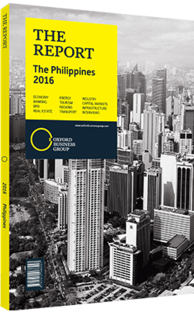Jose Chaves Alvarez, Governor, Province of Palawan: Interview

Interview: Jose Chaves Alvarez
How can Palawan boost its visibility as an ecotourism destination, and what are its economic goals?
JOSE CHAVES ALVAREZ: Palawan boasts a natural beauty and limestone formations that set it apart from other sites, particularly given its success in preserving the island as a natural park. Strong enforcement of environmental protections has helped Palawan create a strategic framework for environmental planning, despite the fact that development in this area has lagged in past decades. The province also hosts two heritage sites – the Tubbataha Reef, a world heritage site for diving, and the Puerto Princesa Underground River. Furthermore, eco-towns like San Vicente, which has the longest beach in the Philippines, at 7 km, provide several potential mangrove ecotourism sites.
To encourage environmentally sustainable developments, the permit process is being expedited via direct contact with applicants; however, there must also be mechanisms in place to ensure that developments dispose of waste properly and do not pollute.
Palawan aims to contribute 5% to national GDP and reach 3.5m tourists over the next 10 years. It also plans to capitalise on agriculture as an economic driver; the province benefits from being typhoon-free and Palawan has already received an investment commitment from Fresh Del Monte Produce for banana and pineapple plantations.
Fish and marine life, namely seaweed, remain the province’s main export, at 334,000 tonnes in 2014 – a figure expected to double in five years. Palawan’s marine area is roughly 3.5m ha, big enough to accommodate large investment in seaweed factories.
What are the province’s infrastructure priorities?
ALVAREZ: Palawan is spread across 1728 islands, with a 570-km mainland and a total end-to-end distance of 800 km, or a one-hour trip by jet. The province has 23 municipalities, 12 of which are island towns. To enhance connectivity, the Palawan government is constructing grass airstrips in every town but Kalayaan, which has a military airport. These airstrips will have heavy foundations for typhoon resilience and will be able to accommodate small aircraft. Countries like Belize, which only receives small aircraft or caravans, have a flourishing tourism industry – a model Palawan could replicate. The Puerto Princesa airport is also being improved by South Korea’s Kumho-GS in order to become an international gateway by mid-2017, while four new regional airports will be built in Coron, San Vicente, Balabac and Brooke’s Point.
In anticipation of tourism growth, the province is constructing 5500 km of roads in the next three years through the Infrastructure, Health, Education, Livelihood and Protection of the Environment Programme. This is being carried out in tandem with a roll-on/roll-off (ro-ro) system, which will connect Palawan with the rest of the archipelago – Manila in particular. ASEAN integration could further facilitate this; a ro-ro system would be able to tap into regional markets like Malaysia, where visas are not required and more connectivity would facilitate the free movement of goods and people. Palawan is also engaged in developing clean water projects for each of its 367 villages and social services such as hospitals; 11 are now being built, in addition to several smaller clinics.
How can Palawan create more local employment?
ALVAREZ: Palawan’s problem is that it has only 1m people, 250,000 of whom are in Puerto Princesa alone, and most local manpower currently remains either idle or tied to seasonal fishing or coconut and rice farming. The goal is to transform our 367 small villages into active economic units through micro-financing and capacity building for entrepreneurship. To address the education backlog the province is opening a Technical Education and Skills Development Authority school in southern Aborlan, which aims to generate 1000 to 3000 graduates each year.
You have reached the limit of premium articles you can view for free.
Choose from the options below to purchase print or digital editions of our Reports. You can also purchase a website subscription giving you unlimited access to all of our Reports online for 12 months.
If you have already purchased this Report or have a website subscription, please login to continue.

